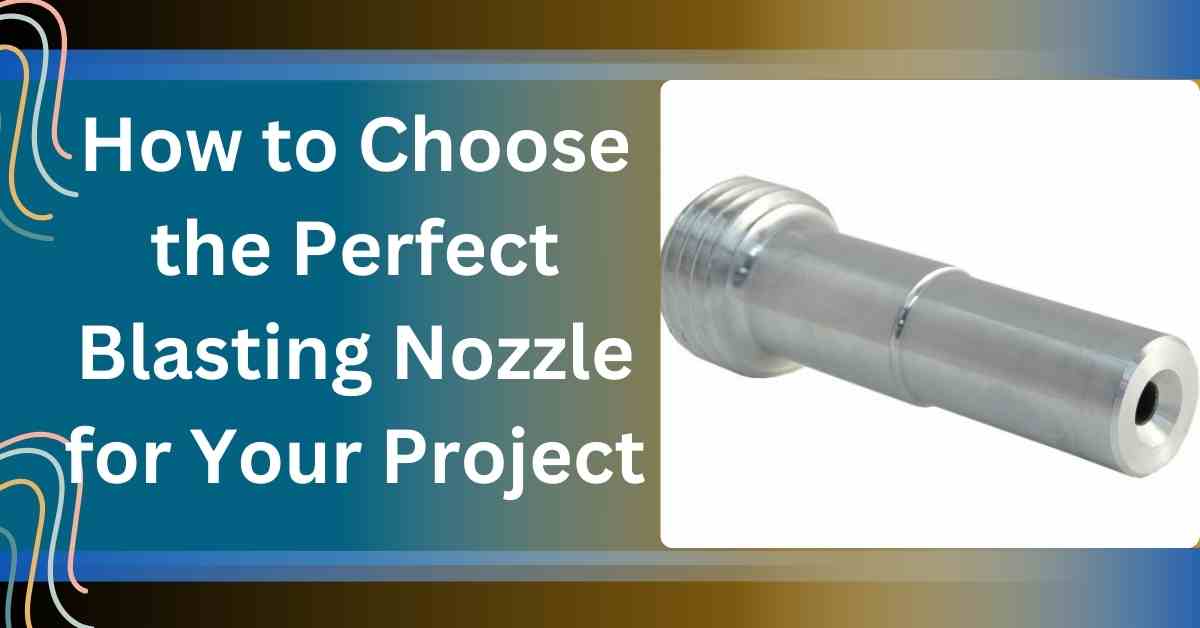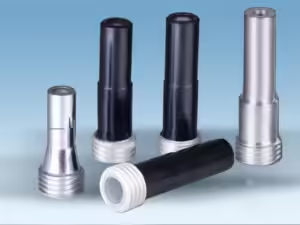
A blasting nozzle is an essential tool for anyone involved in abrasive blasting, whether for industrial purposes or smaller DIY projects. It directs abrasive material onto a surface to clean, polish, or prepare it. Selecting the right blasting nozzle can significantly impact the efficiency and quality of your work. But with so many options available, how do you choose the best one for your specific project?
In this guide, we’ll break down everything you need to know about blasting nozzles, their types, key features, and how to make an informed choice to achieve the best results.
NOTE : Ready to elevate your surface cleaning and preparation projects? Explore a variety of blasting nozzles to find the one that suits your needs perfectly. Invest in the right blasting nozzle today to save time, improve efficiency, and achieve outstanding results in every project!

How to Choose the Perfect Blasting Nozzle for Your Project
What is a Blasting Nozzle?
A blasting nozzle is the component at the end of a blasting gun or hose that controls the flow and velocity of abrasive material. It’s a small but critical part of the blasting process because it determines how effectively the abrasive cleans or prepares a surface.
The nozzle is responsible for:
- Shaping the Blast Pattern: The nozzle determines the area covered by the abrasive stream.
- Controlling Velocity: It increases the speed of the abrasive material for efficient cleaning.
- Regulating Airflow: The size and design of the nozzle influence how much air is needed for blasting.
Choosing the right nozzle ensures that your equipment performs well and minimizes wear on other components.
Why is Choosing the Right Blasting Nozzle Important?
The blasting nozzle you use can make or break your project. Here’s why selecting the right one is crucial:
- Improved Efficiency: A well-matched nozzle speeds up the cleaning process, saving time and effort.
- Better Results: The correct nozzle ensures uniform cleaning or preparation, enhancing the final outcome.
- Reduced Costs: A nozzle suited to your project minimizes wear and tear, lowering maintenance and replacement costs.
- Enhanced Safety: Using the wrong nozzle can cause unnecessary strain on equipment, potentially leading to accidents.
Types of Blasting Nozzles
There are several types of blasting nozzles, each designed for specific tasks. Understanding these types will help you choose the right one for your project:
1. Straight Bore Nozzles
- What They Are: These nozzles have a straight inner bore and create a narrow, concentrated blast pattern.
- Best For: Small-scale or precise applications like etching or cleaning corners.
- Key Benefit: Offers excellent control for detailed work.
2. Venturi Nozzles
- What They Are: Designed with a tapered entry and exit, these nozzles increase velocity and widen the blast pattern.
- Best For: Large-scale projects, such as cleaning large metal surfaces or preparing walls for painting.
- Key Benefit: High efficiency and faster coverage.
3. Wide Throat Nozzles
- What They Are: These nozzles have a larger inner diameter to accommodate higher volumes of abrasive material.
- Best For: Heavy-duty applications like removing thick layers of rust or paint.
- Key Benefit: Handles large-scale, high-demand jobs.
4. Angle Nozzles
- What They Are: These nozzles direct the abrasive at an angle, making them ideal for hard-to-reach areas.
- Best For: Cleaning corners, grooves, or intricate parts.
- Key Benefit: Allows access to difficult surfaces.
5. Specialty Nozzles
- What They Are: Custom-designed nozzles for unique applications like wet blasting or coating removal.
- Best For: Specialized tasks requiring specific outcomes.
- Key Benefit: Tailored performance for niche projects.
Factors to Consider When Choosing a Blasting Nozzle
Selecting the right blasting nozzle involves evaluating several factors. Here’s what to keep in mind:
1. Material Compatibility
Different abrasive materials require different nozzles. For example:
- Use ceramic nozzles for softer abrasives like glass beads.
- Choose tungsten carbide or boron carbide nozzles for tougher materials like steel grit or aluminum oxide.
2. Size and Bore Diameter
The size of the nozzle affects the blast pressure and coverage:
- Smaller nozzles (less than 6 mm) are ideal for detailed work.
- Larger nozzles (6–12 mm) are better for heavy-duty tasks. Match the nozzle size to your air compressor’s capacity for optimal performance.
3. Nozzle Material
The material of the nozzle determines its durability and compatibility with abrasive media:
- Ceramic: Affordable and lightweight but less durable.
- Tungsten Carbide: Highly durable and ideal for long-term use with hard abrasives.
- Boron Carbide: Extremely durable and resistant to wear, perfect for demanding projects.
4. Blast Pattern
Choose a nozzle that delivers the blast pattern you need:
- Narrow patterns for precision work.
- Wide patterns for large surfaces.
5. Project Type
Consider the specific requirements of your project:
- Rust removal requires high velocity.
- Polishing delicate surfaces needs low-pressure blasting.
6. Air Pressure Requirements
Ensure your air compressor can provide the pressure needed for the nozzle size. Using an incompatible compressor can reduce performance or damage equipment.
Maintenance Tips for Blasting Nozzles
Proper care can extend the life of your blasting nozzle and ensure consistent performance:
- Inspect Regularly: Check for cracks, wear, or uneven openings, and replace worn nozzles promptly.
- Clean After Use: Remove abrasive residue to prevent clogs and buildup.
- Store Safely: Keep nozzles in a dry, clean place to avoid damage or contamination.
- Monitor Air Pressure: Excessive pressure can wear out the nozzle faster.
- Use Compatible Abrasives: Using incompatible materials can damage the nozzle and reduce its lifespan.
Common Mistakes to Avoid
Avoiding these mistakes will help you get the most out of your blasting nozzle:
- Using the Wrong Size: A nozzle that’s too small or too large can compromise efficiency.
- Neglecting Maintenance: Skipping regular checks and cleaning shortens the nozzle’s lifespan.
- Mismatched Abrasives: Using the wrong abrasive material can damage the nozzle or reduce effectiveness.
- Overloading the Compressor: Ensure your air compressor is compatible with the nozzle to avoid performance issues.
Conclusion
Choosing the perfect blasting nozzle for your project is key to achieving high-quality results efficiently. By understanding the types of nozzles, their applications, and the factors to consider, you can select the right one for your needs. Proper maintenance and avoiding common mistakes will further enhance your blasting experience, ensuring safety and cost-effectiveness.
For more insightful articles related to this topic, feel free to visit ezine-articles







